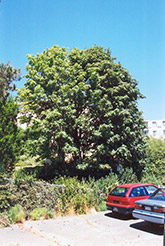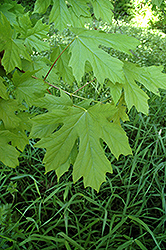Height: 60 feet
Spread: 45 feet
Sunlight:
![]()
![]()
Hardiness Zone: 6a
Other Names: Oregon Maple
Description:
A native west coast tree with large lobed leaves, no one particularly strong landscape characteristic, but overall makes a fine shade tree; best suited for use in moist temperate conditions
Ornamental Features
Big Leaf Maple features showy racemes of fragrant yellow flowers hanging below the branches in mid spring before the leaves. It has dark green deciduous foliage. The large lobed leaves turn outstanding shades of orange and yellow in the fall.
Landscape Attributes
Big Leaf Maple is a dense deciduous tree with a more or less rounded form. Its strikingly bold and coarse texture can be very effective in a balanced landscape composition.
This is a relatively low maintenance tree, and should only be pruned in summer after the leaves have fully developed, as it may 'bleed' sap if pruned in late winter or early spring. It has no significant negative characteristics.
Big Leaf Maple is recommended for the following landscape applications;
- Shade
Planting & Growing
Big Leaf Maple will grow to be about 60 feet tall at maturity, with a spread of 45 feet. It has a high canopy with a typical clearance of 6 feet from the ground, and should not be planted underneath power lines. As it matures, the lower branches of this tree can be strategically removed to create a high enough canopy to support unobstructed human traffic underneath. It grows at a medium rate, and under ideal conditions can be expected to live to a ripe old age of 100 years or more; think of this as a heritage tree for future generations!
This tree does best in full sun to partial shade. It prefers to grow in average to moist conditions, and shouldn't be allowed to dry out. It is not particular as to soil type or pH. It is somewhat tolerant of urban pollution. This species is native to parts of North America.
Disclaimer - This resource is provided for informational purposes only and does NOT reflect current availability. Inventory varies seasonally, so we cannot guarantee that every plant will be in stock at all times - please contact your favourite GardenWorks location directly for current availability. It does not include our entire inventory of plants, so be sure to visit GardenWorks to see varieties that may not be represented on this list.


